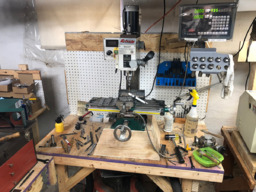Grizzly G0758 Benchtop Mill Conversion
Discussion in 'CNC Mills/Routers' started by Rob Taylor, Oct 25, 2018.
Grizzly G0758 Benchtop Mill Conversion
Discussion in 'CNC Mills/Routers' started by Rob Taylor, Oct 25, 2018.
A proper CNC mill conversion. But quite small, with my trademark idiosyncracies.
Page 1 of 2
Page 1 of 2
